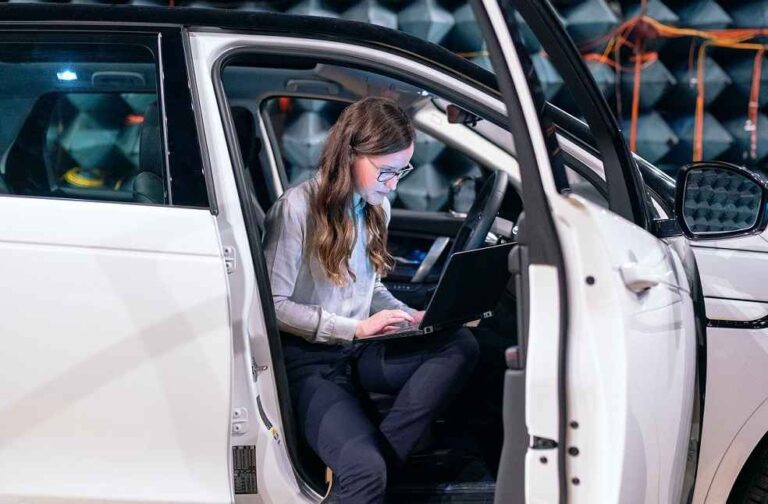Find critical insights into the evolving Autoworld landscape in the following article. It reveals important trends such as the dramatic shift towards electric vehicles (EVs), changing consumer preferences, and the unsettling waves of geopolitical instability and climate change that are affecting the sector. The article also discusses evolutionary advances in autonomous driving and cybersecurity.
♦ The transition to electric vehicles (EVs): Global EV sales are expected to grow from 6.6 million in 2021 to 40 million by 2026, according to IHS Markit. However, EVs still only account for a small fraction of total car sales. In 2021, EVs accounted for only 8.6% of global car sales.
♦ Rising costs: The cost of raw materials and labor is rising, which is driving up the cost of cars. Additionally, the global economic slowdown is making it difficult for some people to afford new cars. The average price of a new car in the United States reached a record $48,008 in march 2023, according to Kelley Blue Book.

♦ Changing consumer preferences: Consumers are becoming more interested in alternative forms of transportation, such as ride-sharing and public transportation. Additionally, they are increasingly demanding cars that are more environmentally friendly and fuel-efficient. As per 2023 McKinsey survey; 52 percent of people are ready to consider an electric car for their next vehicle. This is the global average. However, in India, this shows a surprising growth. Among Tier-One Indian car consumers, 70 percent say their next purchase will be an electric car.
♦ Geopolitical instability: The Ukraine-Russia war, the Palestinian-Israeli conflict, looming pandemic threats, and other geopolitical tensions are creating strong uncertainty and volatility in the global economy. This creates fear for automakers to plan for the future and invest in new technologies, and it slows down research.
♦ Climate change: Car manufacturers are under increasing pressure to reduce their environmental impact. This means developing more fuel-efficient cars and investing in alternative fuel technologies, such as electric vehicles and hydrogen fuel cells.

♦ Autonomous driving: Autonomous driving technology is rapidly developing, and it is expected to have a major impact on the automobile industry in the coming years. Car manufacturers are investing heavily in autonomous driving technology, but there are still many challenges that need to be addressed before self-driving cars can be widely deployed.
♦ Cybersecurity: Cars are becoming increasingly connected to the internet, which makes them vulnerable to cyberattacks. Car manufacturers need to invest in cybersecurity measures to protect their vehicles from hackers.
♦ Roads: The lack of adequate roads for the increasing number of vehicles is a major problem in most countries. This problem is expected to worsen in the next five to six years, forcing people to adopt suitable modes of travel and causing other modes of travel to evolve accordingly. This is one of the major setbacks that the automobile manufacturing sector will face in the future.

Some important statistics:
- The global vehicle fleet is expected to grow from 1.4 billion vehicles in 2022 to 2.5 billion vehicles by 2050, according to the International Energy Agency.
- In developing countries, the vehicle fleet is expected to grow even faster, from 400 million vehicles in 2022 to 1.2 billion vehicles by 2050.
- This growth in the vehicle fleet is putting a strain on existing road infrastructure, which is already inadequate in many countries.
- For example, in India, there are only 1.2 kilometers of roads per 1,000 people, compared to 6.4 kilometers of roads per 1,000 people in the United States.
- The lack of adequate roads is leading to traffic congestion, air pollution, and noise pollution.
- It is also making it difficult for people to access essential services, such as healthcare and education.
To address this problem, governments around the world are investing in new road infrastructure. However, it is clear that it will take many years to build enough roads to accommodate the growing number of vehicles. In the meantime, people will need to adopt other modes of travel, such as public transportation, walking, and cycling.

The automobile manufacturing sector will need to adapt to this shift in consumer demand. This means developing vehicles that are more fuel-efficient and that produce fewer emissions. It also means developing vehicles that are more suitable for urban environments, such as electric vehicles and self-driving cars.
The lack of adequate roads for the increasing number of vehicles is a major challenge for both governments and the automobile manufacturing sector. However, it is also an opportunity to develop new and innovative solutions to transportation problems.
AWJ CHOICE | Toyota Automobile Museum Enters Its 35th Year with a 4.4 Rating





